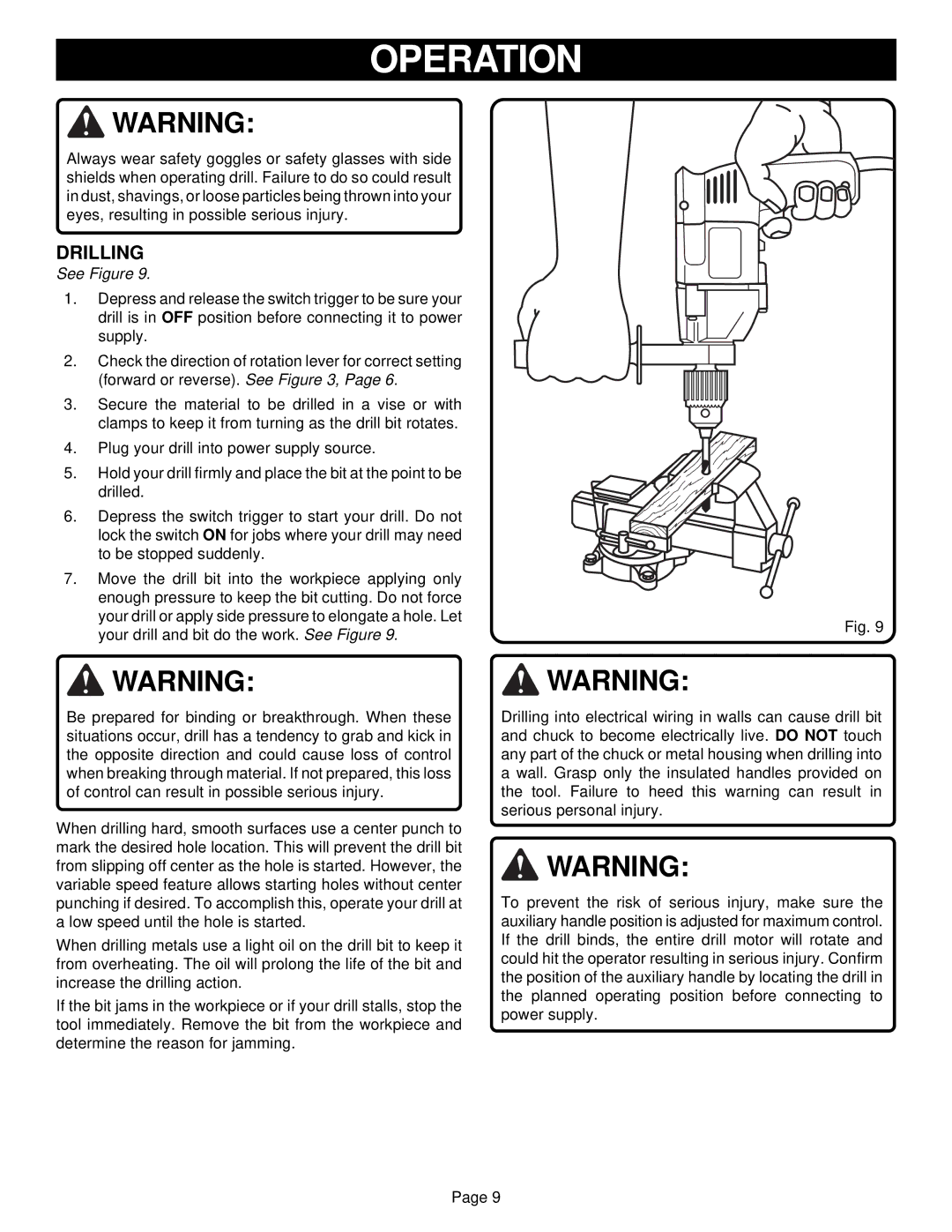
OPERATION
![]() WARNING:
WARNING:
Always wear safety goggles or safety glasses with side shields when operating drill. Failure to do so could result in dust, shavings, or loose particles being thrown into your eyes, resulting in possible serious injury.
DRILLING
See Figure 9.
1.Depress and release the switch trigger to be sure your drill is in OFF position before connecting it to power supply.
2.Check the direction of rotation lever for correct setting (forward or reverse). See Figure 3, Page 6.
3.Secure the material to be drilled in a vise or with clamps to keep it from turning as the drill bit rotates.
4.Plug your drill into power supply source.
5.Hold your drill firmly and place the bit at the point to be drilled.
6.Depress the switch trigger to start your drill. Do not lock the switch ON for jobs where your drill may need to be stopped suddenly.
7.Move the drill bit into the workpiece applying only enough pressure to keep the bit cutting. Do not force your drill or apply side pressure to elongate a hole. Let your drill and bit do the work. See Figure 9.
![]() WARNING:
WARNING:
Be prepared for binding or breakthrough. When these situations occur, drill has a tendency to grab and kick in the opposite direction and could cause loss of control when breaking through material. If not prepared, this loss of control can result in possible serious injury.
When drilling hard, smooth surfaces use a center punch to mark the desired hole location. This will prevent the drill bit from slipping off center as the hole is started. However, the variable speed feature allows starting holes without center punching if desired. To accomplish this, operate your drill at a low speed until the hole is started.
When drilling metals use a light oil on the drill bit to keep it from overheating. The oil will prolong the life of the bit and increase the drilling action.
If the bit jams in the workpiece or if your drill stalls, stop the tool immediately. Remove the bit from the workpiece and determine the reason for jamming.
Fig. 9
![]() WARNING:
WARNING:
Drilling into electrical wiring in walls can cause drill bit and chuck to become electrically live. DO NOT touch any part of the chuck or metal housing when drilling into a wall. Grasp only the insulated handles provided on the tool. Failure to heed this warning can result in serious personal injury.
![]() WARNING:
WARNING:
To prevent the risk of serious injury, make sure the auxiliary handle position is adjusted for maximum control. If the drill binds, the entire drill motor will rotate and could hit the operator resulting in serious injury. Confirm the position of the auxiliary handle by locating the drill in the planned operating position before connecting to power supply.
Page 9
